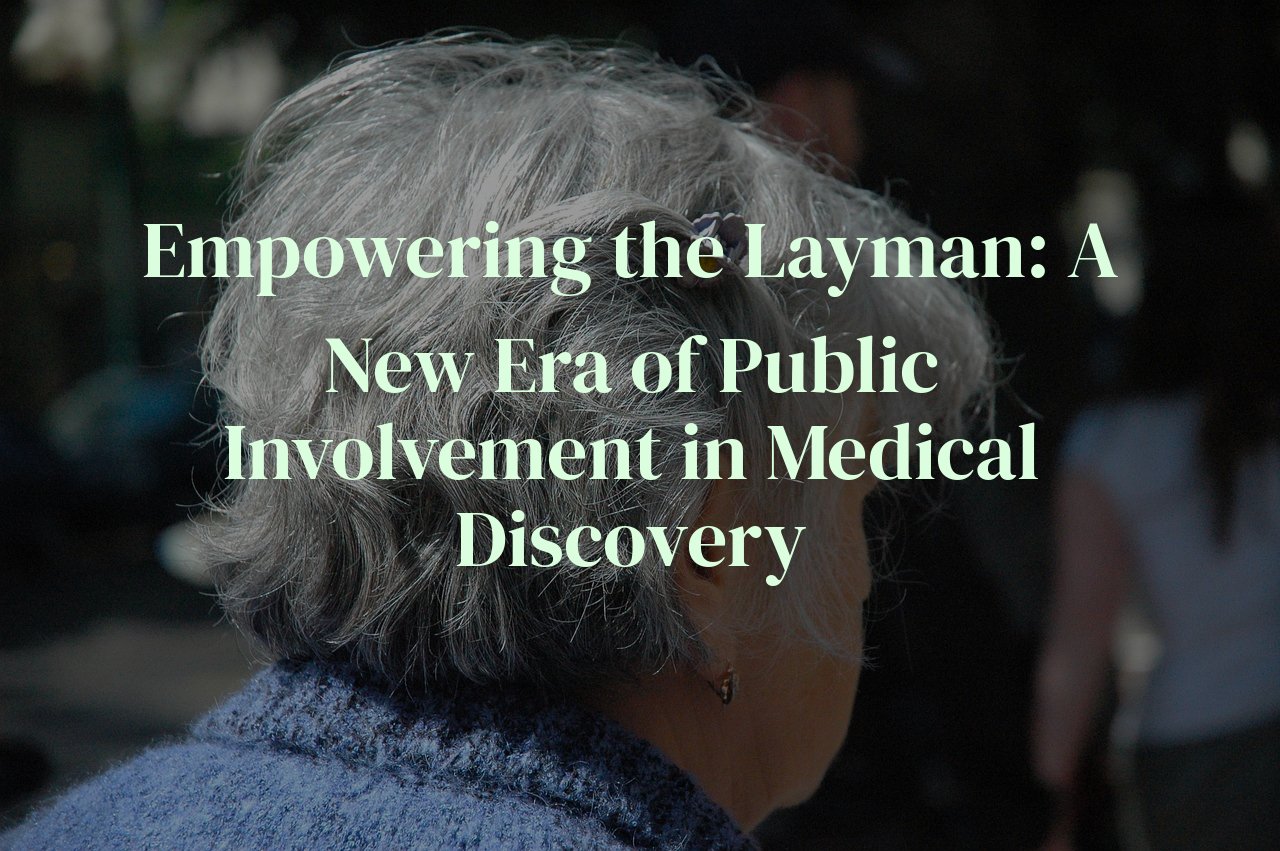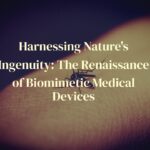
The landscape of medical research is undergoing a profound transformation, one where the line between professional scientist and curious citizen blurs. In this exploration of emerging trends, we’ll delve into the how and why behind the burgeoning movement of citizen science and its impact on health studies. As we unravel this phenomenon, readers will discover the powerful role they can play in contributing to medical breakthroughs and the greater societal benefits that arise from this collaboration. By the end of this post, you will comprehend the significance of this shift and how it heralds a more inclusive approach to scientific exploration and healthcare innovation.
Table of Contents
Democratizing Medical Research: Public Participation’s Growth
The realm of medical research, once the exclusive province of professionals in white lab coats tucked away in institutional laboratories, has been undergoing a remarkable transformation. My journey as a health blogger has allowed me to witness firsthand this seismic shift, where individuals, possessing curiosity and a willingness to contribute, are progressively morphing into citizen scientists. The growth of public participation is not just a trend; it’s akin to a revolution—democratizing medical research to an extent we’ve never seen before.
One of the most compelling facets of this change is the rising involvement of laypeople in large-scale data collection and analysis. From tracking seasonal flu trends to reporting on the local prevalence of certain symptoms, the public’s role is rapidly expanding beyond mere observation. I remember interviewing a group of high school students who, armed with just smartphones and a passion for science, contributed to a crowdsourced health database, an initiative that would have been unthinkable a decade ago.
Participation isn’t limited to data entry, either. I’ve encountered countless stories where patients with rare diseases have initiated and funded their own research studies, leveraging their personal networks and social media. These individuals often connect with scientists and guide the research agenda, sometimes even influencing the drug development pipeline. One mother’s tireless campaign to find a cure for her child’s genetic condition led to a collaboration that resulted in a groundbreaking clinical trial.
Furthermore, through online platforms, public involvement is diversifying the pool of research participants significantly. No longer confined by geography or socio-economic barriers, studies now gather more varied and robust data sets. For example, a virtual study I covered allowed participants from around the globe to contribute to research on sleep patterns, circumventing traditional logistical limitations and expanding our understanding of sleep health across different cultures and lifestyles.
Public access to knowledge, once hoarded behind paywalls and jargon, has also increased, thanks to open source journals and educational resources. This transparency empowers the layman to understand and engage with medical literature, holding researchers and institutions accountable. Lay reviews of scientific papers, previously a rarity, have become more common, fostering an inclusive dialogue between science and society. This culture of openness not only encourages widespread learning but also enhances the quality of research through collective scrutiny.
It’s heartening to see how the growth in public participation is reshaping the landscape of medical discovery. The stories of citizen scientists I’ve shared over the years illustrate a powerful narrative of empowerment and collective intelligence. They signal a new era where the line between professional researchers and enthusiastic laypeople is not just blurred, but enriched by the contribution of every inspired individual.
Harnessing the Power of Numbers: Citizen Science Success Stories
Embarking upon the journey of citizen science often reminds me of the boundless enthusiasm displayed by thousands of individuals eager to contribute to medical research. In my own experience, engaging with such groups, I saw firsthand the positive impact these efforts can make. One story that resonates with me is that of the ‘Flu Near You’ platform, wherein volunteers self-reported symptoms in real time. The collective data gathered was monumental in tracking flu trends and aiding public health responses more rapidly than traditional surveillance methods could.
Another inspiration comes from the ‘Stall Catchers’ game, which mobilized citizen scientists to analyze real Alzheimer’s research data. By turning data analysis into a game, organizers harnessed the collective power of non-experts to accelerate the process, effectively reducing the time needed for certain research tasks by years. The sense of community fostered among participants was palpable, underscoring the value of inclusivity in scientific achievement.
Moreover, the Audubon Society’s Annual Christmas Bird Count, an event with over a century of history, exemplifies the longstanding tradition and future potential of citizen involvement. By contributing to avian biodiversity data, volunteers support wildlife conservation efforts and subsequent human health benefits. After participating in several counts, I was struck by the diversity of volunteers and the commitment to a shared cause, reminding me that when it comes to citizen science, the unity of passion is as vital as the data itself.
These anecdotes offer just a glimpse into a vast archive of successes; each encapsulates the fortitude of collective effort. Yet, while these stories are heartening, they serve as preludes to the next chapters where citizen scientists can further intertwine their work with the professional scientific community for even greater advancements in medical research.
Tech’s Crucial Role: Connecting Communities and Data
In the enthralling landscape of medical research, the surge of citizen science owes much to one pivotal catalyst: technology. In this personal journey, I’ve watched technology dismantle barriers, fostering a terrain where informed laypeople can contribute significantly to scientific endeavors. It’s a thrilling epoch where I’ve seen, firsthand, the amalgamation of community intelligence and robust data systems engendering real-world impact.
The digital sphere has evolved into a dynamic conduit linking volunteers with research initiatives, exemplified by platforms like PatientsLikeMe and Zooniverse. These portals don’t just funnel tasks to users; they cultivate an ethos of collaboration redefining the research hierarchy. Data sharing, for instance, pivots from a logistical necessity to a communal act of empowerment. During a recent webinar, I marveled as patients directly informed researchers of patterns that algorithms had missed—a testament to human intuition augmented by digital connectivity.
Smartphone applications, with their ubiquity, serve as neural nodes in this expanding network. Apps designed for data collection enable people from all walks of life to contribute findings from the comfort of their homes or even on-the-move. Features like real-time feedback loops have enriched the research narrative, crafting a more immediate and tangible connection between individual input and collective progress.
Wearable technology has also leapt from the pages of science fiction into the hands of eager citizen scientists. These devices collect a plethora of physiological metrics that were previously inaccessible without professional intervention. More importantly, the data generated is becoming increasingly sophisticated, capturing intricate biological rhythms that unlock novel insights into human health.
Underlying these technological marvels is a profound shift towards open-source ethos and cloud-based analytics. As a blogger immersed in the digital transformation of health, I’ve observed the democratization of complex data processing tools. They no longer require esoteric knowledge confined to the research elite. The cloud is the contemporary agora, where citizen scientists can access, analyze, and draw conclusions from data that was once locked away in academic silos.
As we embrace this new era, I’m reminded that the pixels and bytes are more than the sum of their parts. They are the threads weaving together a formerly fragmented audience with the ancient and noble pursuit of scientific discovery. It’s a breathtaking symbiosis of humanity’s innate curiosity and the boundless potential of the digital expanse.
Challenges and Ethical Considerations in Amateur Involvement
Enthusiasm for citizen science in medicine burgeons, yet it navigates a labyrinth of challenges and ethical concerns that demand thoughtful deliberation. As a blogger immersed in the realm of healthcare advocacy, I’ve observed firsthand the intricate balancing act required when inviting amateurs into arenas traditionally reserved for professionals.
One paramount challenge presents itself in ensuring data accuracy and reliability. Unlike trained researchers, citizen scientists might lack the expertise to collect and interpret data accurately, potentially leading to misleading or erroneous conclusions. Such inaccuracies do not merely affect research outcomes; they can erode public trust in science if unchecked.
Another concern is the safeguarding of privacy and the ethical handling of sensitive information. Enthusiasts volunteering medical data must trust that their contributions won’t be misused or exposed without consent. Navigating data protection laws and maintaining confidentiality represent significant hurdles. Ethical oversight is crucial, as breaches could have life-altering repercussions for participants.
Miscommunication and misrepresentation of results is another potential pitfall. The ease of sharing information can lead to premature dissemination of incomplete or unverified findings, fueling misinformation. It is essential that citizen scientists receive adequate education to understand the broader context of their work and the importance of rigorous scientific communication.
Lastly, there lies the challenge of balancing inclusivity with the need for oversight. While broadening participation, mechanisms must be in place to prevent exploitation of volunteers and address power imbalances between researchers and the public. As complex as these challenges are, they underscore the need for robust frameworks that uphold the integrity and ethical standards of medical research, so vital for its advancement and for maintaining public trust.
My journey through the evolving landscape of public-involved medical research has convinced me that these concerns aren’t merely hurdles but opportunities. Opportunities to forge stronger, more transparent research practices and to embolden a community eager to contribute to the unfolding story of medical discovery.
Future Frontiers: Predicting the Impact of Citizen Scientists
Envision an era where daily experiences and observations transcend the ordinary, melding seamlessly with the pursuit of medical enlightenment. This is the potential vista that citizen science presents. As a healthcare blogger, my introspective voyages through the flourishing gardens of communal intellect repeatedly affirm the transformative power a united non-professional populace wields. In this flowering future, patient-led research initiatives could revolutionize rare disease diagnosis, transforming anecdotal threads into robust datasets with clinically relevant outcomes.
Consider the realm of genetics. Here, citizen scientists might leap beyond conventional limitations, crafting expansive genealogies that not only trace familial traits but intertwine with multipartite studies to unearth genetic patterns hitherto unseen by the focused eyes of academia. As tales of ancestral markers unfold, new chapters of preventative strategies and personalized medicine begin to be scribed, offering a compass for future explorations in health optimization.
Technology, with its incessant march, will bind citizen scientists in an ever-tightening network of data philanthropy. Platforms may emerge for individuals to donate health data in the same spirit as one would a cherished book to a library, fostering open-source knowledge repositories. Predictive algorithms, fed with streams of volunteered information, might forecast epidemics or unveil environmental health hazards, elevating public awareness and proactive lifestyle modifications in a dance of anticipatory healthcare.
Yet, beyond the analytical prowess and the aggregation of communal wisdom, lies the greater societal narrative—empathy-infused research. Embedding lived experiences into the heart of medical discovery infuses compassion into the cold precision of science. In the crucible of citizen science, each personal story becomes a crucible from which emerges not only knowledge but a collective ethos of care, redefining patient advocacy in tangible, actionable terms.
In my digital odyssey as a blogger, each interaction with awe-inspired readers who relate their personal encounters with citizen science, each engagement with self-taught warriors battling from the trenches of the unknown, crystalizes the conviction that the layman’s role in the medical tapestry is not a transient trend but the warp and weft of a new paradigm. These future frontiers, textured with the diverse fingerprints of public ingenuity, stretch towards an epoch where each of us holds the key to unlock mysteries within us and among us—ushering an age of personalized and participatory medicine unlike any we’ve dreamed before.
Conclusion
The ascendancy of citizen scientists in the realm of medical research is more than just a trend; it’s a paradigm shift that promises to reshape the future of healthcare. With the combined strength of professional expertise and public passion, the potential for innovation is boundless. As this movement gains momentum, it’s imperative that we all recognize our potential to contribute to a healthier world—one shared discovery at a time.



